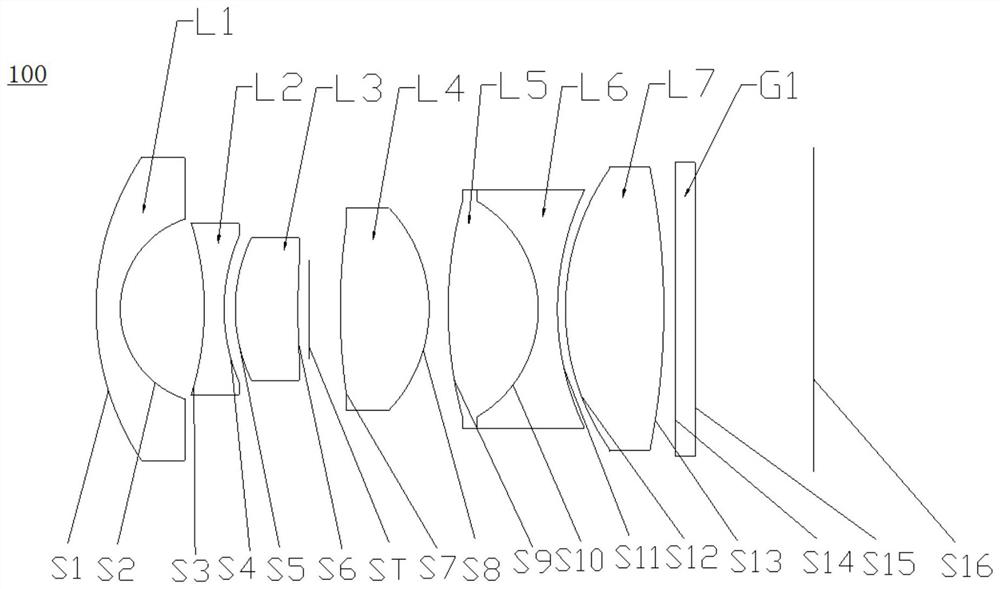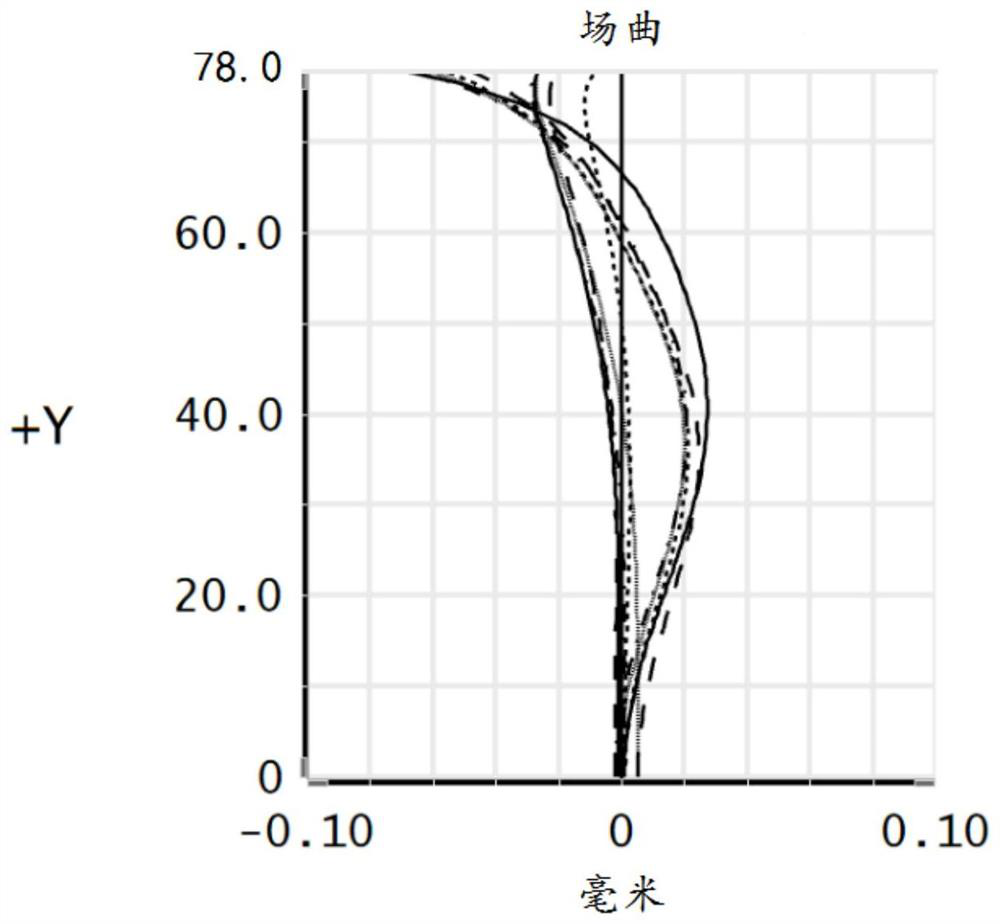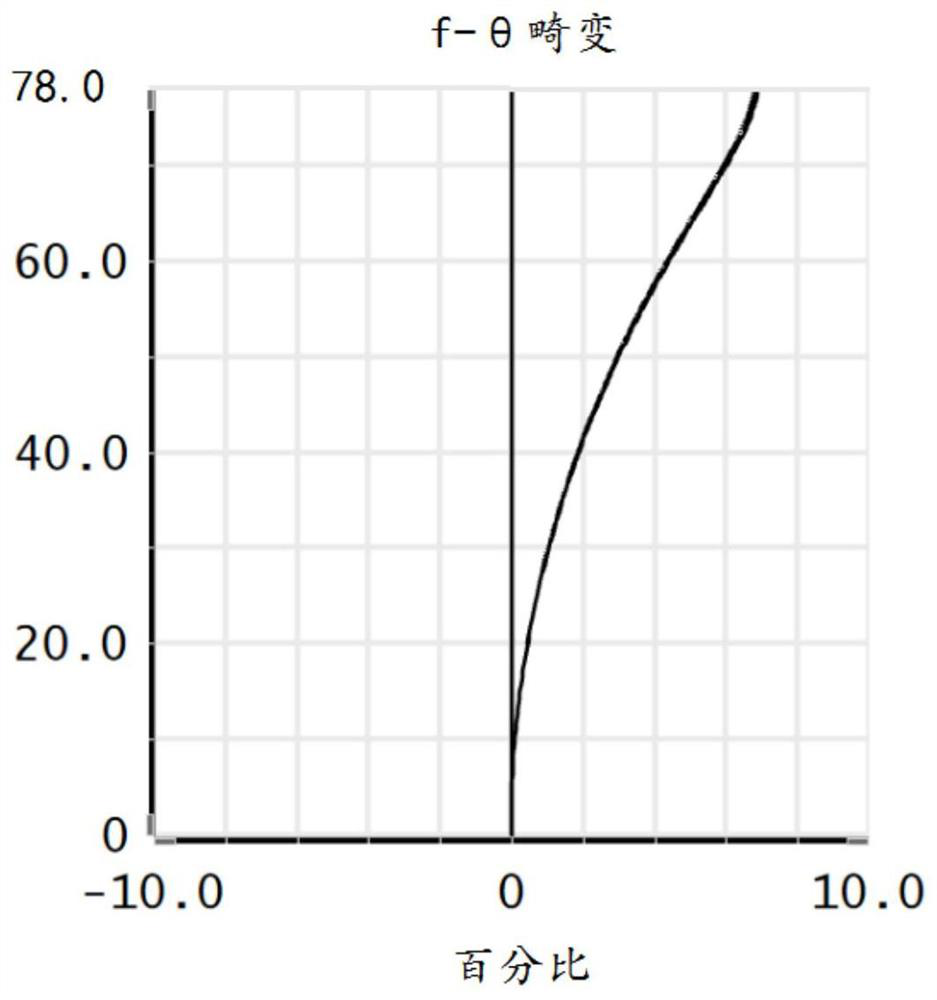wide-angle imaging lens
An imaging lens, wide-angle technology, applied in optical components, instruments, optics, etc., can solve the problem of unable to maintain stable imaging ability, unable to achieve pixels, etc., and achieve the effect of correcting field curvature, eliminating aberration, and correcting chromatic aberration
- Summary
- Abstract
- Description
- Claims
- Application Information
AI Technical Summary
Problems solved by technology
Method used
Image
Examples
no. 1 example
[0105] see figure 1 The wide-angle imaging lens 100 provided by the first embodiment of the present invention includes, from the object side to the imaging surface in sequence: a first lens L1, a second lens L2, a third lens L3, a stop ST, a fourth lens L4, a Fifth lens L5, sixth lens L6, seventh lens L7, and filter G1.
[0106] The first lens L1 has negative refractive power, the object side S1 is convex, and the image side S2 is concave. The first lens L1 is a glass spherical lens.
[0107] The second lens L2 has negative refractive power, and its object side surfaces S3 and S4 are both concave, and the second lens L2 is a glass aspherical lens.
[0108] The third lens L3 has positive refractive power, the object side S5 is convex, and the image side S6 is concave. The third lens L3 is a glass aspheric lens.
[0109] The fourth lens L4 has positive refractive power, the object side S7 and the image side S8 are both convex, and the fourth lens L4 is a glass spherical lens. ...
no. 2 example
[0123] see Figure 6 , shows a structural diagram of a wide-angle imaging lens 200 provided in this embodiment. The wide-angle imaging lens 200 in this embodiment is roughly the same as the wide-angle imaging lens 100 in the first embodiment, the difference is that the object side surface S3 of the second lens L2 of the wide-angle imaging lens 200 in this embodiment is a convex surface, and the second The image side S6 of the three lenses L3 is convex, the fourth lens L4 is an aspheric lens and the image side S8 is concave, and the radius of curvature and material selection of each lens are different. The specific parameters of each lens are shown in Table 2-1.
[0124] table 2-1
[0125] Surface serial number surface type radius of curvature thickness Refractive index Abbe number Object surface endless endless S1 sphere 10.176458 1.208244 1.835 42.73 S2 sphere 2.698737 2.001130 S3 Aspherical 7.286530 0.631545 ...
no. 3 example
[0132] see Figure 11 , shows a structural diagram of a wide-angle imaging lens 300 provided in this embodiment. The wide-angle imaging lens 300 in this embodiment is roughly the same as the wide-angle imaging lens 100 in the first embodiment, the difference is that the object side surface S3 of the second lens L2 of the wide-angle imaging lens 300 in this embodiment is a convex surface, and the second The object side S5 of the three-lens L3 is concave, and the image side S6 is convex, and the radius of curvature and material selection of each lens are different. The relevant parameters of each lens are shown in Table 3-1.
[0133] Table 3-1
[0134]
[0135]
[0136] The aspheric parameters of the aspheric lens of this embodiment are shown in Table 3-2.
[0137] Table 3-2
[0138]
[0139] In this embodiment, its field curvature, f-θ distortion, axial chromatic aberration and vertical axis chromatic aberration are respectively as follows Figure 12 , Figure 13 ...
PUM
 Login to View More
Login to View More Abstract
Description
Claims
Application Information
 Login to View More
Login to View More - R&D
- Intellectual Property
- Life Sciences
- Materials
- Tech Scout
- Unparalleled Data Quality
- Higher Quality Content
- 60% Fewer Hallucinations
Browse by: Latest US Patents, China's latest patents, Technical Efficacy Thesaurus, Application Domain, Technology Topic, Popular Technical Reports.
© 2025 PatSnap. All rights reserved.Legal|Privacy policy|Modern Slavery Act Transparency Statement|Sitemap|About US| Contact US: help@patsnap.com



